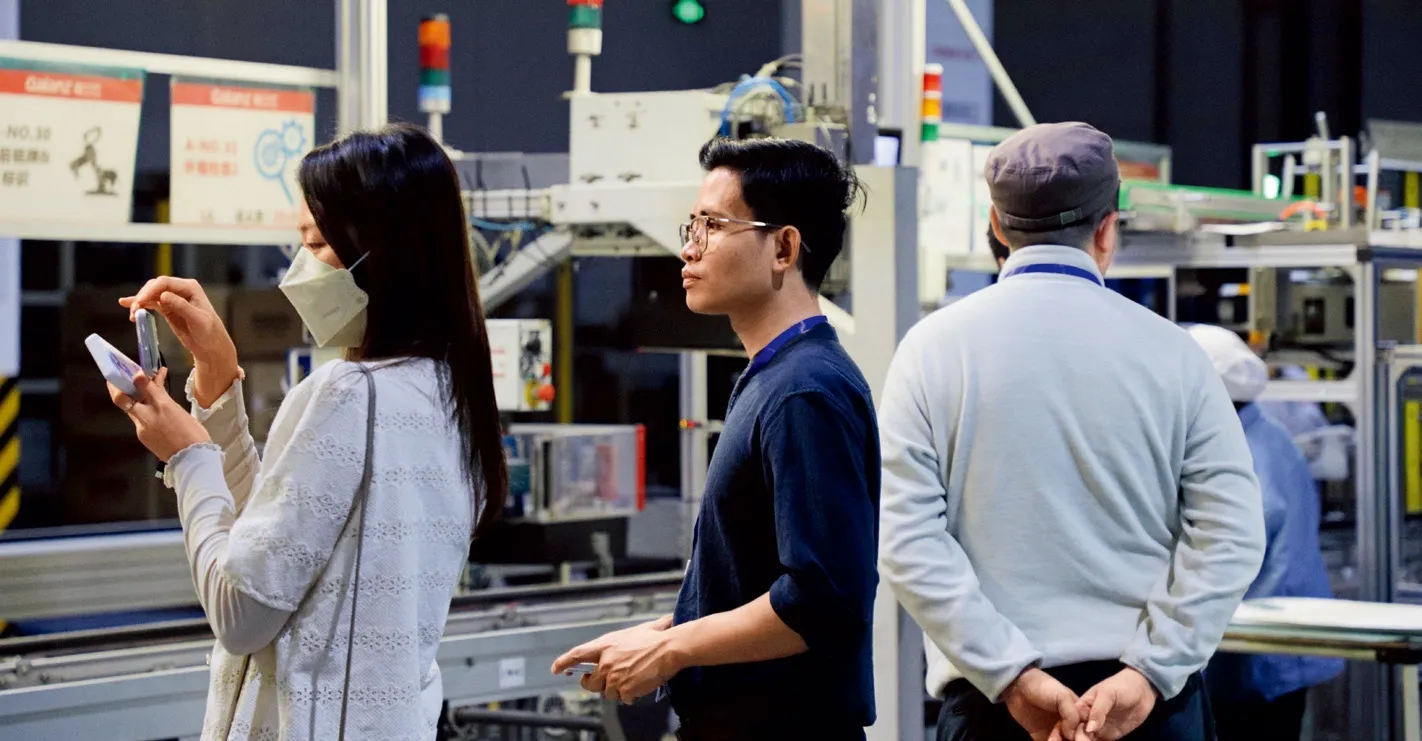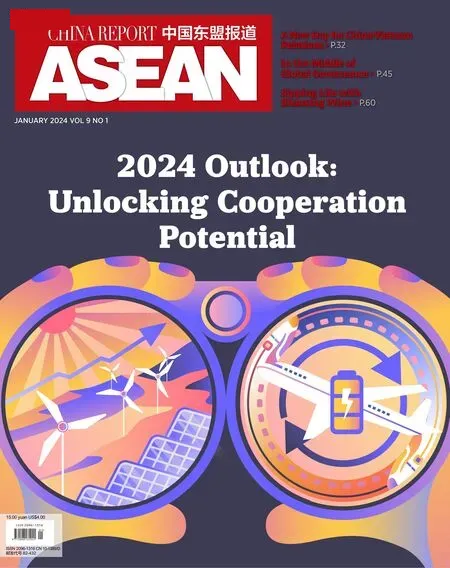Zhongshan:Rising Dragon of Guangdong
By Si Thu Tun

Zhongshan Museum.
My journey to Zhongshan City in Guangdong Province alongside experts,foreign correspondents,and local Chinese journalists proved to be an enlightening exploration of the intricacies of China’s development,especially within its smaller cities.While a brief fiveday sojourn wasn’t sufficient for intimacy with the city’s entirety,the immersion into Zhongshan’s cultural,historical,and modern facets,including Zhongshan Museum,urban planning zones,business hubs,an industrial park,ancient villages,Dr.Sun Yat-sen Museum,and a monumental bridge project,left me with the impression that the city is awakening like a dragon ascending from the heart of Guangdong.
Zhongshan Museum: Narrating the Complete Tale of Zhongshan
Our first day in Zhongshan commenced with an exploration of Zhongshan Museum.Beyond unraveling the city’s origins,the museum serves as a dynamic tapestry chronicling Zhongshan’s contemporary evolution.Delving into the history of Zhongshan’s initial settlement,the global journeys of its people,and their current endeavors,the museum provided a vivid journey back in time.It transported me to ancient eras,allowing me to envision the struggles of Zhongshan’s denizens fighting for their rights in foreign lands marked by discrimination.
In the wake of these struggles,some returned to establish schools,fostering education,while others collaborated to contribute to the development of their homeland.Through the museum,I traced Zhongshan’s roots back at least 5,000 years,long before the illustrious Song Dynasty (960-1279).The museum’s unique ability to survey the city’s entire history in one space inspired deep appreciation for Zhongshan’s enduring spirit and resilience across the ages.
The museum testifies to Zhongshan’s commitment to preserving its history while embracing the dynamism of the present.The immersive experience left me with a profound appreciation for the city’s resilience and the cultural tapestry woven across millennia.
Innovation,Renovation,and Modernization
The city’s industrial park,local businesses,and transformative projects left an indelible mark on my perception.Discovering that certain city sectors were constructed on reclaimed land,including the industrial park,heightened my admiration.Iconic businesses such as the expansive lighting mall Star Alliance,the space-age chair manufacturer Sitting Sense,and the smart electronic devicemaking giant Galanz call Zhongshan home-a revelation that sparked astonishment.
Our visit to a bridge project linking Zhongshan and Shenzhen highlighted a remarkable endeavor.This bridge,coupled with an underwater tunnel,is set to open in mid-2024 and slash travel time between the cities from the current 2 to 3 hours to a mere 20 minutes.Part of a supercluster project with an estimated cost of 44.69 billion yuan (US$6.29 billion),this infrastructure marvel integrates tunnels,islands,bridges,and underwater interchanges to propel local transportation,trade,and business.
Xiaolan Town’s renovation zone showcased the city’s commitment to replacing aging structures with modern edifices.Notably,residents and office occupants affected by development have been duly compensated for the entire duration of the construction period.The thoughtful compensation approach highlights Zhongshan’s consideration for its citizens during times of transformation.This resonates with a city mindful of its people as it progresses into the future.
Zhongshan’s commitment to innovation,evident in reclaimed land developments and offices of iconic businesses,showcases a city strategically shaping its economic future.The ambitious bridge project and thoughtful compensation approach underscore Zhongshan’s holistic vision,positioning it not just as a modernized city but as a community-centric hub for economic and cultural exchange.
Chrysanthemum Fair: An 800-Year-Old Tradition
Resembling a standard flower fair at first glance,Xiaolan’s chrysanthemum fair unraveled into a mesmerizing testament to an 800-year-old tradition.Different chrysanthemum varieties adorned the exhibition area,representing diverse communities in Xiaolan with intricately crafted designs including dragons and mountain shapes.This seemingly ordinary fair,upon closer inspection,revealed a rich tradition of love,cultivation,and appreciation for chrysanthemums embedded in Xiaolan’s communities.
Originating over 800 years ago,the tradition began with the discovery of chrysanthemums in the area.To preserve their memory,these flowers were planted in every household,eventually evolving into a large-scale chrysanthemum fair held every 60 years,dating back to 1814 during the Qing Dynasty.Between these major exhibitions,smaller-scale fairs maintain the tradition,showcasing how certain regions in China successfully intertwine ancient cultures with modernization.
The chrysanthemum fair reflects Zhongshan’s ability to seamlessly integrate ancient traditions into its modern fabric.It’s a celebration not just of flowers but of a living heritage that persists through time.
Thousand-Year-Old Villages
Zhongshan boasts ancient villages with histories longer than a millennium.Among these,Qixi Village,with its unique ecological advantages,beckons visitors.A village farm,flourishing with diverse herbs,allows visitors to request cultivation of specific vegetables or plants at a fair price.Some village houses offer rooms for visitors to experience authentic village life amidst mountains,streams,and farmlands.Qixi showcases Zhongshan’s commitment to sustainable tourism contributing to the local economy.

Si Thu Tun (center) visits Galanz’s Zhongshan Base.
Yongmo Village,established in the Song Dynasty almost a thousand years ago,was the birthplace of notable figures including renowned reformist Zheng Guanying (1842-1922).Preserving ancient cultures,an ancestral hall built in 1903 has been transformed into a farmhouse library housing over 5,000 books.Additionally,the scenic Luosanmei Mountain,on which Comrade Deng Xiaoping commented,stands as a testament to breaking away from traditional paths,leaving an enduring imprint on history.Visiting Yongmo Village reinforced the idea that history is not confined to textbooks;it lives on in the transformation of ancestral halls into libraries.This symbolic act demonstrates Zhongshan’s dedication to intellectual progress rooted in its historical legacy.
Reflections on Zhongshan’s Dynamic Landscape
Our journey through Zhongshan prompted contemplation of China’s multifaceted strategies.Beyond the visible modernization,rural development,and urban planning initiatives,the city unveiled a commitment to preserving cultural heritage.Local governments,in their pursuit of development,engage in a spirited competition to attract not only visitors but also crucial foreign investment.Zhongshan,emerging as a dynamic dragon,symbolizes Guangdong’s evolving landscape,embodying the delicate dance between tradition and progress.As the city awakens,it marches forward,leaving a trail of inspiration for other regions to follow.
Zhongshan’s dynamism encapsulates the broader narrative of China’s evolving identity.The city’s commitment to preserving cultural heritage while embracing progress sets a compelling precedent for regions navigating the delicate balance between tradition and the demands of a rapidly changing world.

